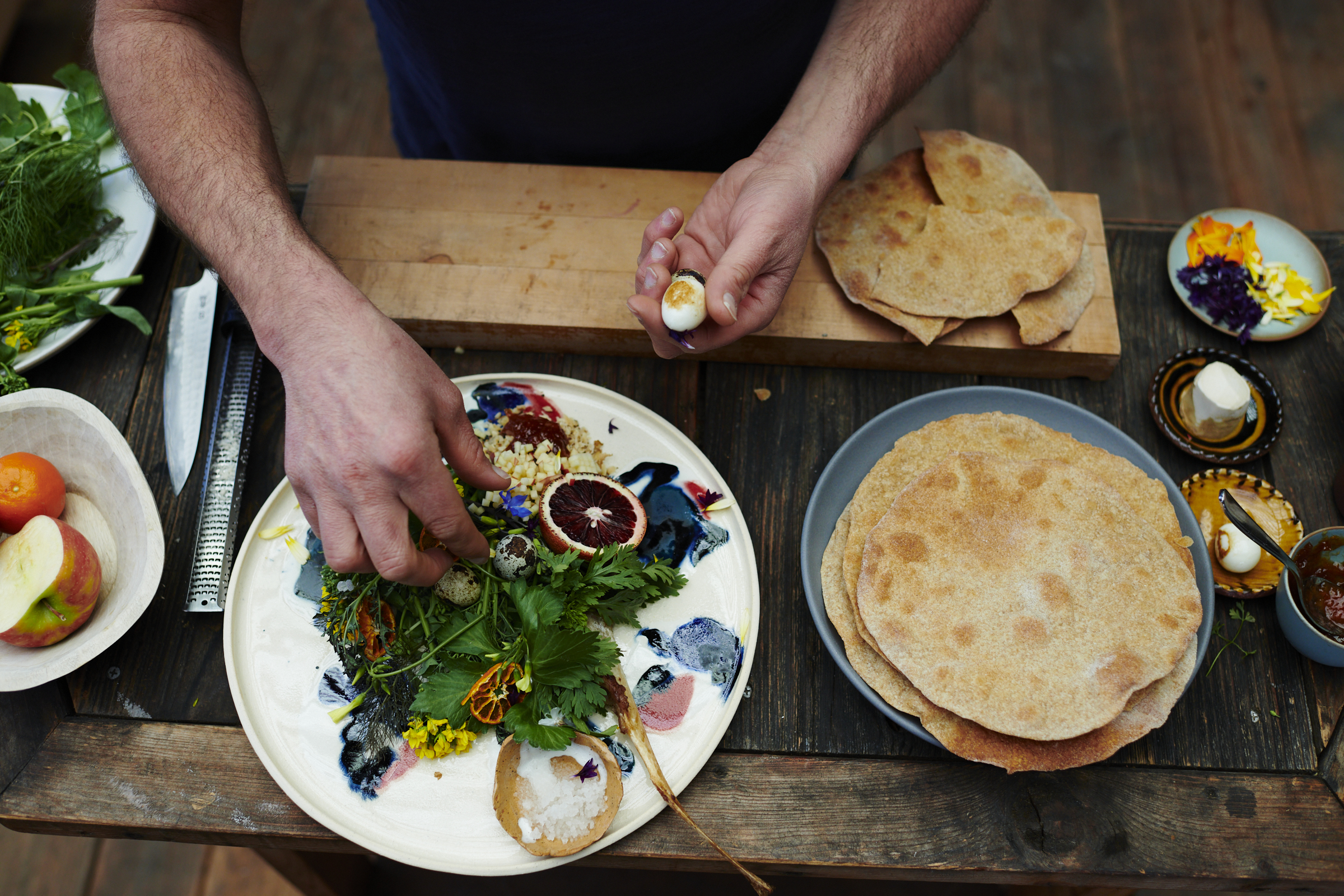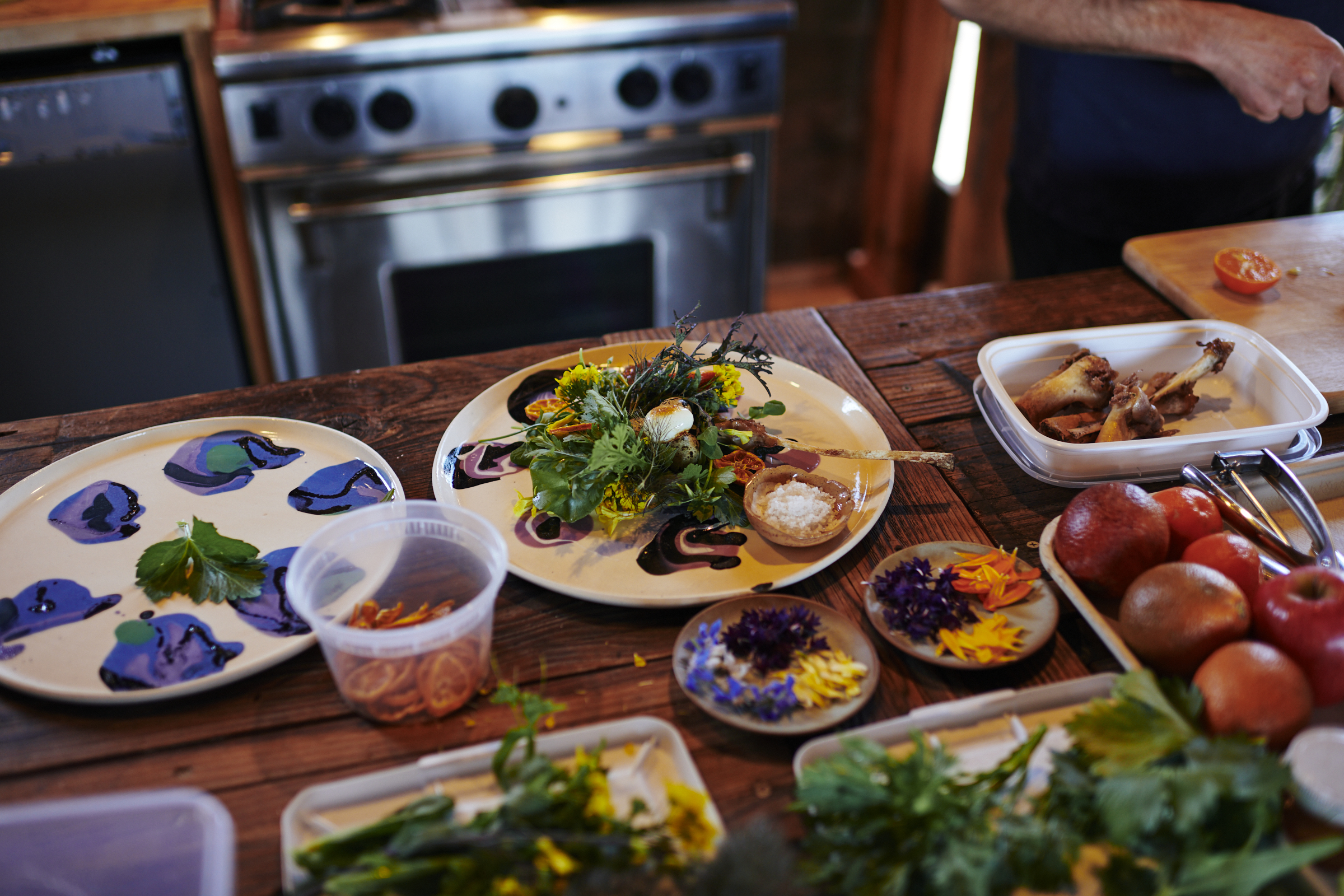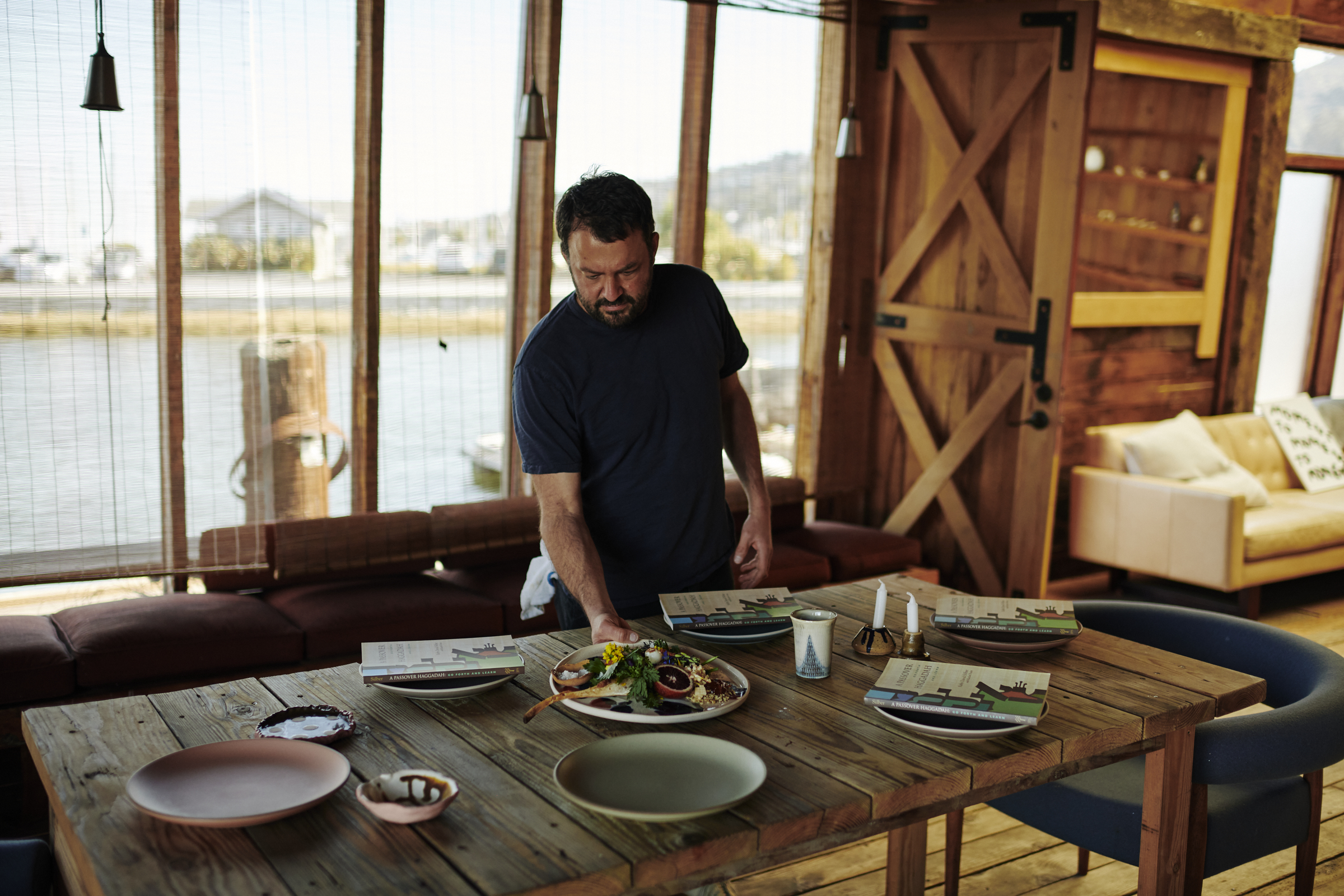It was an early March morning, the sky a brilliant blue. Bay waters splashed up the sides of the Sausalito houseboats. As Stuart and Nicole, chefs and co-owners of State Bird Provisions, stepped out of their truck bearing containers of food and newly-created Passover recipes, a small pack of dogs ran over, wagging and sniffing excitedly at their heels. Artist Jenny Sharaf welcomed us into her studio, and gifted Stuart the ceramic plate he would use to recreate a new take on a Seder meal. She then led us over to a converted barge, which, she told us, housed underground dinner parties, and now would stage her fantasy Seder.

Photo: Peter McCollough
We’ve found ourselves here because, several months ago, Jenny Sharaf partnered with The Contemporary Jewish Museum (The CJM) to launch a new line of Judaica that would embody the spirit of California. Jenny represents a group of young, creative Jewish people who do not possess inherited Judaica. So, she started thinking about making her own.
Jenny wanted this Judaica to feel different than what already existed. She wanted it to be colorful, dreamy—something that matched the spirit of her paintings. It needed to be equal parts artwork and functional ritual object. In the process, Jenny also began imagining her own Passover Seder, and set out to find a chef whose food could tap into the same magical California current as Jenny’s art. She reached out to some friends of a friend, chefs Stuart Brioza and Nicole Krasinski, who happily accepted the creative challenge of reimagining a Passover Seder plate.

Photo: Peter McCollough
In California, we like to think of ourselves as the vanguards of culture, especially when it comes to pushing the boundaries of convention. So we knew this Seder plate would have be different from others even before our first conversation. Neither Stuart nor Nicole is Jewish (although Stuart had recently learned that his paternal grandmother was Jewish), so we started with conversations about Passover dietary restrictions, traditional foods, and the lines between what could be reinvented and what must adhere to tradition. I counseled when I could, and consulted other CJM colleagues when I wasn’t sure. For me and so many others, the magic of Passover is how customizable it is. Certain rituals remain steadfast, like the reading of the Haggadah, the pile of matzah, and the traditional ritual items that represent the Passover story: roasted bone, horseradish, charoset. Other (traditional) elements on the plate celebrate the coming of spring, like an egg or a parsley sprig. Yet no one family's Seder looks like any other’s. Traditions evolve and new items crowd onto the table year after year, representing the openness of the Passover story. And the literal and metaphorical table continues to expand. The orange, an increasingly common addition, to represent LGBTQ+ inclusion, and fair trade chocolate to remind us that we must continue to fight against injustice. This year, I’m adding acorns to my plate as a tribute to the Bay Area Ohlone communities whose unceded land we reside upon.

Photo: Peter McCollough
Stuart approached his reinvention by arranging his Seder plate as an ode to Bay Area springtime. He foraged in the fields around his farm and plucked nasturtium, oxalis, wild pea shoots, onion flowers, bronze fennel, and parsley, and piled it all into a lush green nest. In the center were three delicate quail eggs, and a tiny lamb bone jutting out from the side (they were going to have lamb for dinner that night). A neat stack of walnuts, compote, and apples formed the charoset, and, added with a chef’s flourish, a pile of finely shredded wild horseradish rested to the side. He concluded by anointing the plate with wildflower petals. It became something anyone would want to eat; just like everything a Michelin-starred chef creates.
After Stuart finished the arrangement to his—and our—satisfaction, and after he demonstrated his California Salmon gefilte fish recipe (available here for all to try!), he finished plating the meal and brought it outside to Jenny and some of her friends who had assembled to watch the magic unfold. As the fog started wisping around Mount Tam, they opened a bottle of Napa red and toasted to art, collaboration, imagination, and the onset of spring.

